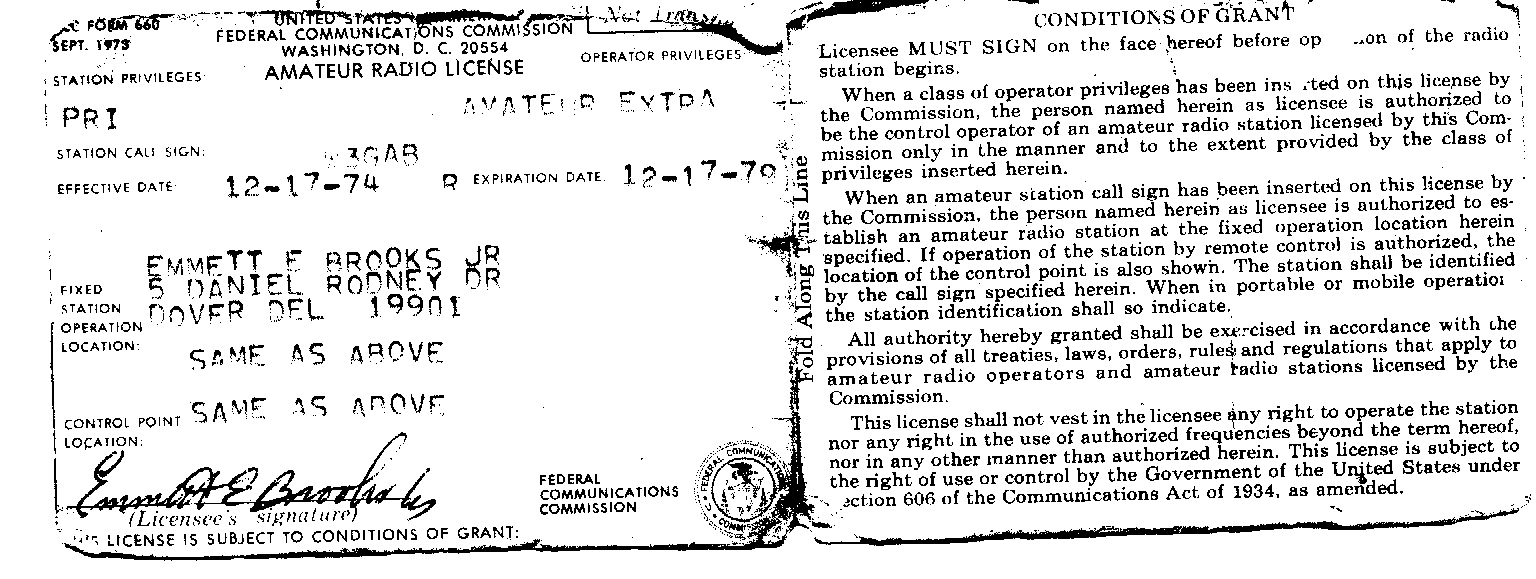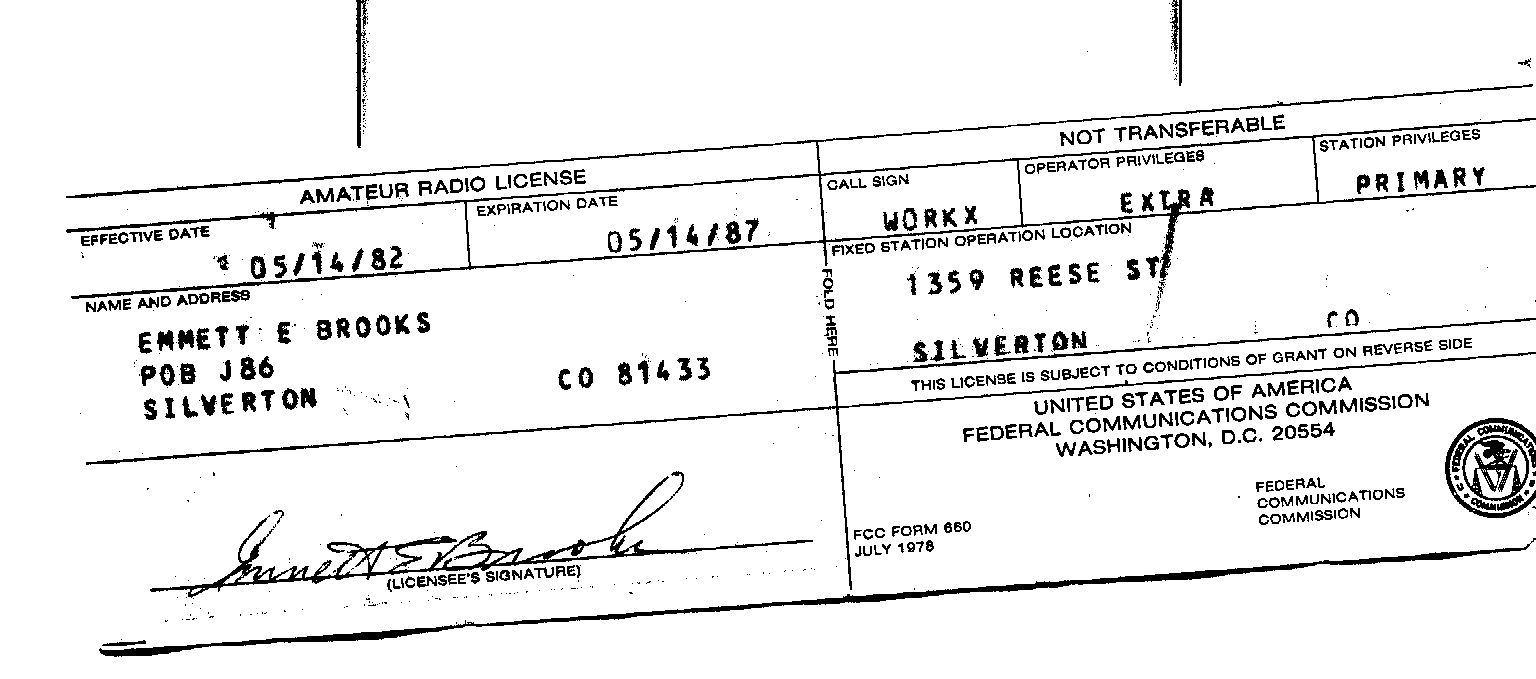AMATEUR RADIO LICENSES Due to some recent controversy on QRZ.COM, about where a home amateur radio station is called a "fixed station" or a "base station," I decided to post some
copies of a couple of my very old amateur radio licenses. Note: The FCC referred to the home station as a "fixed station." It meant the location of the transmitting equipment licensed. The
FCC no longer requires that. There was at time when one applied for an amateur radio license, one had to specify, in great detail, the EXACT location of the intended transmitter. That could be a
street address, or a rural address, or directions, such as "Go Highway 41 south, turn east 2-1/2 miles to Gorietta, go south 300 yards, to white house on left." Operation away from that fixed
location required notification of portable or mobile operation. A "base station" was considered to be as above, a fixed station at a specific point, but used in association with its mobile units
under the same license. CB radio had "base stations" for they were meant to communicate with mobile stations under the same license. Business band stations were the same way. Amateur
stations were not, as they were a single fixed station which would not normally be communicating with a mobile station under the same license. |



